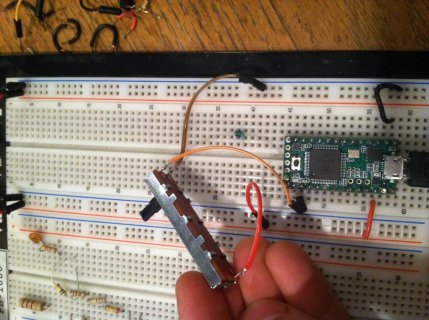It seems a lot of people get stuck in a catch 22 with sensor noise such as this - I don't want to solder my components all into a board yet, because I want to make sure I can get it working before I make any semi-permanent decisions. However after doing some reading, it seems as though a lot of the sensor noise that I am getting is from not having my connections soldered.
but who knows...
assuming that my noise levels don't change once I solder everything in, what is my best option - using a capacitor or dealing with it in the code? I am using linear potentiometers (faders) going into the analog inputs on the teensy3.1 (one outer leg to 3.3v, one outer leg to ground, and inner leg to pin14.)
and what is a good cap value for a 10k fader? What is a good way of going about finding this value?
Thanks!
Zach
but who knows...
assuming that my noise levels don't change once I solder everything in, what is my best option - using a capacitor or dealing with it in the code? I am using linear potentiometers (faders) going into the analog inputs on the teensy3.1 (one outer leg to 3.3v, one outer leg to ground, and inner leg to pin14.)
and what is a good cap value for a 10k fader? What is a good way of going about finding this value?
Thanks!
Zach


